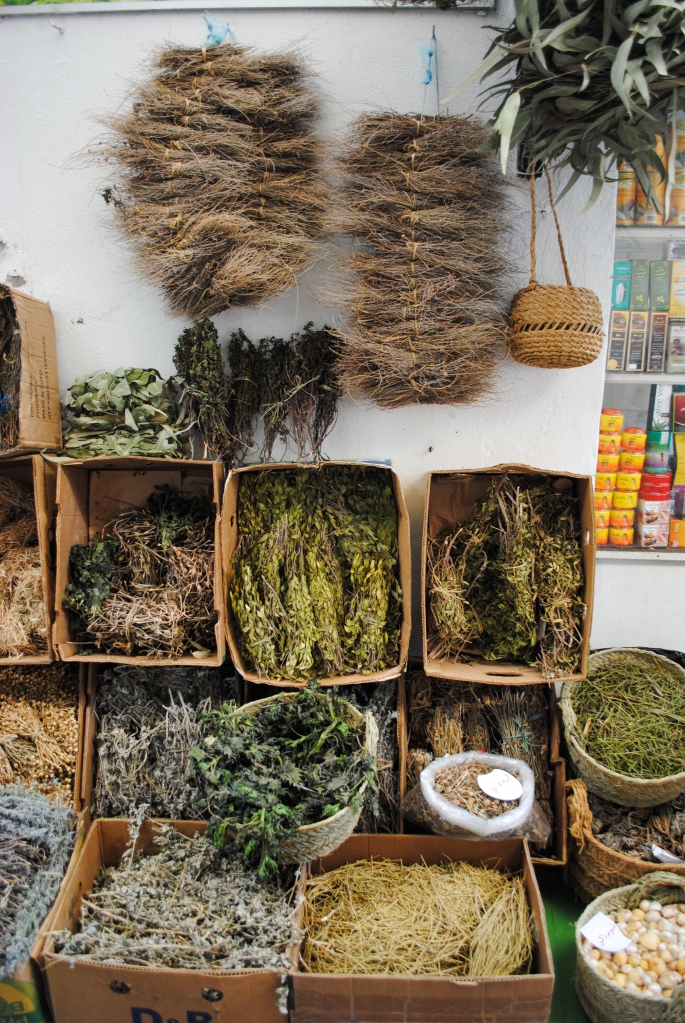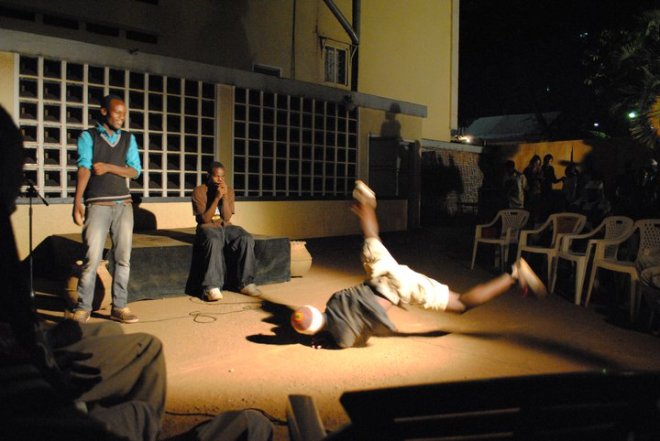
Tawfiq Ben Yacoub in his shop in the Souq El Blat
“The Souq El Blat is the heartbeat of the medina,” proclaims Mourad Boughanmi, a medicinal herb seller speaking from his shop in this historic quarter of Tunis. Indeed, for centuries, its herbs have sustained the bodies of people living here. Bundles of wild thyme, sage, poppy, garlic and eucalyptus have lined the walls of this shadowy Souq for at least 700 years.
Since Covid-19 entered Tunisia last year, some herbalists say demand for plant medicine has grown, with greater numbers wanting to strengthen their immune systems naturally. But customs are changing, and without any state support, this trade has become endangered.
Five thousand years ago the Sumerians of Mesopotamia documented the health-enhancing properties of wild plants. These early texts articulated the ancient practice of herbalism, where ecology, biology and chemistry meet. In the ensuing millennia, medicinal herbs have been picked and prepared to help with a number of different ailments. In the cavernous shops of the Souq El Blat, this profession lives on.
Down the Rue Bacha Hamba, Tawfiq Ben Yacoub, a herb dealer with a passion for art, history and music has a shop with the chaotic feel of an artist’s studio; it is filled with flasks, bottles, paintings, bags of old herbs and the sweet smell of incense. He tells his story over the quiet fuzz of a radio and bleating mopeds passing by.
As a boy, he would hike with his Libyan father in the green mountains near Benghazi, where he learnt about medicinal herbs. He describes the 10th century Tunisian physician, Ibn al Jazzar, advancing herbal medicine in Tunisia and across North Africa. After the Islamic Golden Age, Ben Yacoub believes medicine stagnated across the Muslim world compared with Europe due to weaker institutionalised scholarship. “We lost knowledge of this science when we lost the scripts,” he says. “Today our children learn about Ibn al Jazzar, but as history rather than for scientific training.”
Nearby, in his shop next to the Khilwiya Bilhassan mosque, Chowki El Foutt is another herb dealer who sees his vocation as a strand in Tunisia’s rich and complex history. El Foutt says it was the Ottoman Turks who really established herbal medicine here, from the 16th to the 18th centuries. He views his practice as part of Tunisia’s patrimoine. “Just as we have heritage in clothes and language, so we have herbal medicine. It is something we need to keep.”
Yet with the rise of pharmaceutical medicine, these herbalists can appear artisanal. They also lack outside support. When I ask Mourad Boughanmi whether he receives state aid, he creases with laughter. “We get zero help”, he said. Several others say the same thing.
Being marginalised in this way is frustrating for Samir Ben Youssef. A herbal doctor specialized in aiding women’s fertility, Ben Youssef has inherited his father’s profession and treated patients in the Souq El Blat for 20 years.
“People think herbalists are charlatans”, says Ben Youssef, shaking his head. He is trying to resist this labelling by ensuring his results are assessed at clinical laboratories through CBEU tests and other standard, scientific procedures. While using these modern practices, the basis of his learning reaches back as far as the great 11th century Persian polymath, Ibn Sena.
“100 years ago, this whole road as far as the mosque (Zaytuna) was lined with herboristes”, says Ben Youssef. “There was a whole chain of people who went to gather the herbs. But young people today don’t want to work in this trade anymore. And the elders don’t want to pass on their knowledge,” he says. “So it will disappear.”
Though there are some younger herbalists, like Yacine Ben Moussa, who believe that modernity offers advantages. “Before I only worked with herbs that grow in Tunisia,” he says. “Now, with the internet, I can google things and order foreign herbs online.” Among the shelves of plant medicines, which include cloves, anise and chia seeds, he shows me a framed certificate of phytotherapy from an academy of complementary medicine. Clearly there are institutions of learning.
As Samir Ben Youssef intimated, however, the reputation of herb dealers may present a problem. They are associated with black magic. Many of the shops sell turtle carcasses as lucky charms. Some allegedly sell crushed iguana and hedgehog carcasses. One gave me a bag of cowrie shells and black nigella seeds to ward off the evil eye.

These customs might confirm suspicions that herbalism is hogwash, but it’s worth seeing them in context. Despite its secularism, spiritual belief still heavily influences Tunisian society. In medicine, while Tunisia has largely adopted western practices, the relationship between spirituality and healing lives on. This broader view of medicine – which herbalists span – has arguably helped to sustain a more holistic, intuitive approach to healing.
As I leave the medina, taking in the smells of leather and jasmine scent from a succession of cavernous shops, I pass the crumbling main entrance of 7th century Al Zaytuna mosque. My head is alive with thoughts of shamans, Ibn Sena and the madrassas, and the people once employed in gathering the plants and seeds to heal the sick.
I reflect on a part of herbalism that modern medicine – like many modern things – has lost, in being processed and abstracted: the relationship between things. In this Souq, a person suffering from diabetes can see and touch and smell the wormwood that they hope will heal their illness. Through the herbalist, they can learn about its anti-diabetic effects, and that it grows among the craggy rocks of the southern Jebel Oust mountains.
This is important: it reminds people that most medicine is essentially drawn from the living or organic world, a basic fact that may be lost to many consumers of western medication. This is not to discredit western medicine at all – its importance, for billions of people, is undeniable. But it is to remember that humbling, sacred aspect of medicine; that much of what heals us can be found in nature.

An edited version of this article was published in The Guardian













